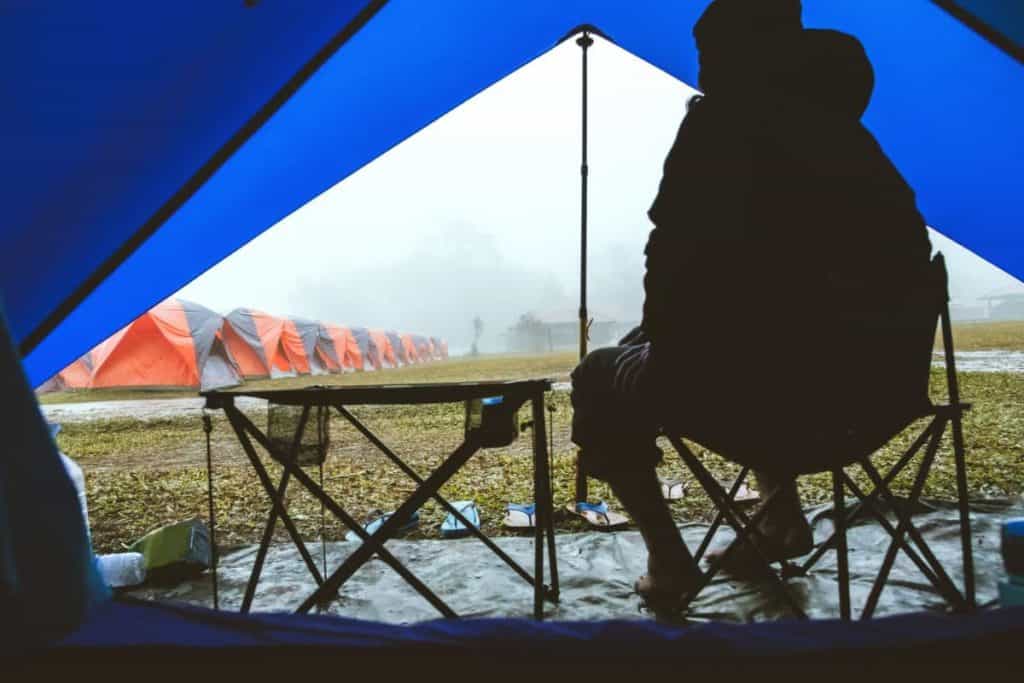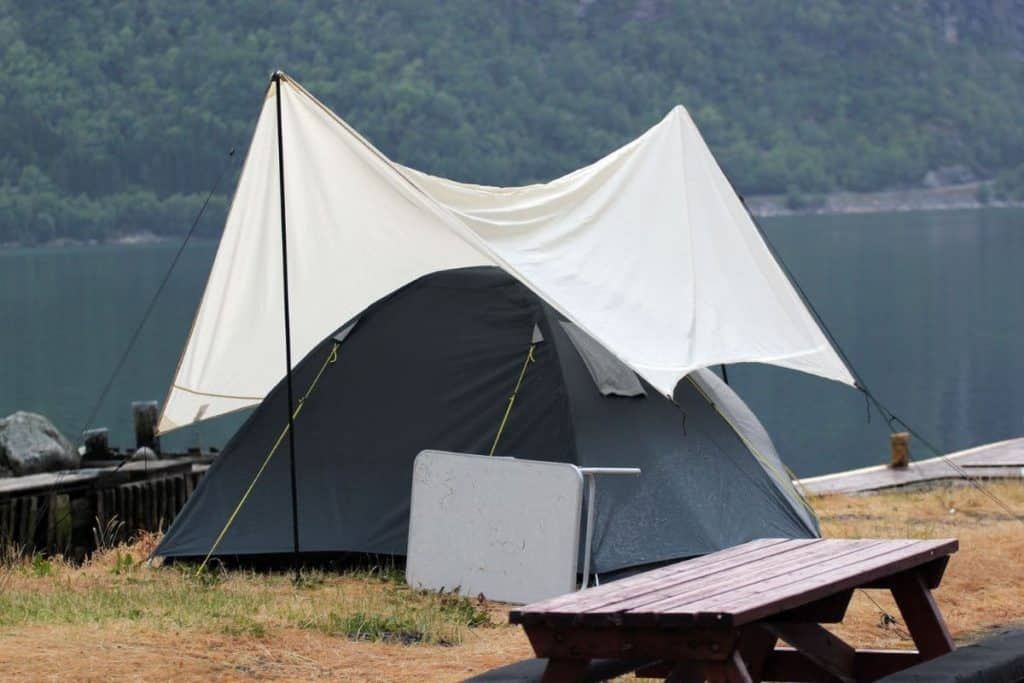Are you planning on going on a camping trip, but you’ve heard that it might rain there? If you don’t want to risk water leaking into your tent and ruining your trip, there are ways to prepare yourself for the worst. Rain shouldn’t stop you from doing what you like most, camping.
A tent can leak if it’s raining because tents aren’t wholly waterproof. Tents’ materials are supposed to allow air to circulate through them. Regular rainfall shouldn’t be an issue, but heavy rain will eventually cause leakage. Seam sealer and water repellent can fortify the fabric and the seams.
In the following parts of the article, I will share with you some reasons why you should waterproof your tent and how to do so. After reading this article, you’ll be able to protect your tent from leakage and will undoubtedly save your camping trip.

Why You Should Waterproof Your Tent
As mentioned before, the materials from which tents are often made (polyester, cotton, and nylon) aren’t 100% waterproof, meaning that any tent will eventually leak after being subjected to heavy rainfall or sitting in a lot of water accumulated on the ground.
When it comes to the seams, there’s a possibility that they haven’t been stitched properly. Or the stitches could have started to loosen up after using the tent for a little while.
If this happens and your tent begins to leak, it can thoroughly soak all of the belongings, some of which might be very valuable and suffer irreversible damage. You’d also have to sleep on a wet mattress or in a damp sleeping bag, which is probably not the most enjoyable experience.
If the moisture is trapped inside your tent, it can start to smell bad, attract insects, and weaken and damage the fabric. All of this is easily avoidable if you take some precautions and allow your tent to dry out completely after it’s been wet.
How To Waterproof Your Tent
Utilize the following methods to waterproof your tent.
Fill the Seams With Seam Sealer
Seam sealers are a type of glue used to close the tent’s seams. The sealant is waterproof, inexpensive, and easy to apply. Rain can, in fact, infiltrate a tent through the tiny holes made when the seams were stitched. A sealer will plug those small holes and reinforce the seams altogether.
You should apply the seam sealer a little while before leaving for your camping trip because it does take a day or two to dry and serve its purpose completely.
How To Find the Best Sealant
You have different sealants for different means. You can find out which one works best for your tent or other outdoor gear. The following options are available on Amazon.com.
For silicone-coated tents, you can use GEAR AID Silicone Sealant. This sealant is highly heat- and cold-resistant. It has a cure time of only six hours and comes in a package of 1.5 oz (44.4 ml)
The Gear Aid Fast Cure Sealant can be used for nylon, canvas, polyester tents, and other outdoor equipment. It comes in a two-pack containing 2 oz (59 ml) each. The sealant is fast-drying. It takes about two hours for it to cure completely.
Seam Seal Tape
You can also get seam seal tape, which would be easier to apply, but might come off faster. Seal tape is ideal for closing up small holes but can be used over the entire seam for waterproofing.
It’s the fastest method to fix leaks without spending much money. It might be a good idea to keep a roll of this tape on hand on your camping trip to resolve any issues that come up at the time. It might be the first time your tent starts to leak after rain, but you’ll be prepared.
Like the seam seal, you can also buy seam seal tape on Amazon.com, such as GEAR AID Seam Tape. With its width of 1.5 inches (3.81 cm) and length of 60 inches (152.4cm), this clear tape will last a long time and won’t cost you much.
Apply Water Repellent
Water repellent spray is cheap, easy to apply, and strengthens your tent’s fabric. It’s a chemical spray that coats your fabric, helping it avoid direct contact with water and not allowing water to seep through the material.
You can buy high-quality water-repellent spray on Amazon.com, like the Gear AID Revivex Water Repellent. This spray comes in 16.9-oz (500-ml) packaging and can be used on all outdoor and sports gear that needs waterproofing.
Use a Tarp
If you want to waterproof the bottom of your tent, you should invest in a high-quality tarp. Tarps are denser and thicker than your tent’s fabric, so they do a better job of keeping any water out. Tarps are inexpensive and can be used to cover anything, to protect it from the weather. [Should you put a tarp under your tent?]

You can adequately install a tarp by putting it underneath your tent, folding the sides neatly under the tent, and weighing the sides down with whatever can keep them in place. That way, the rain can’t accumulate on top of the tarp and soak the bottom of the tent anyway.
Amazon has a great polyethylene tarp available for camping. The AmazonBasics Waterproof Camping Tarp is 96 x 120 inches (243.84 x 304.8 cm) and 1.5 pounds (0.68 kg), not too heavy to take camping with you.
Final Thoughts
You can protect your tent and belongings inside it from the rain. Protect your (weakened) seams with some seam sealer in liquid form or as clear tape. To fortify the tent’s fabric, you can use water-repellent spray. You should also use a tarp under the tent to prevent water from the ground from soaking the tent.
These prevention methods are cheap solutions to your water-related camping problems. Take the necessary steps to avoid a disastrous camping trip. Sleeping in a wet environment with moist belongings probably isn’t something you want to experience anytime soon.
